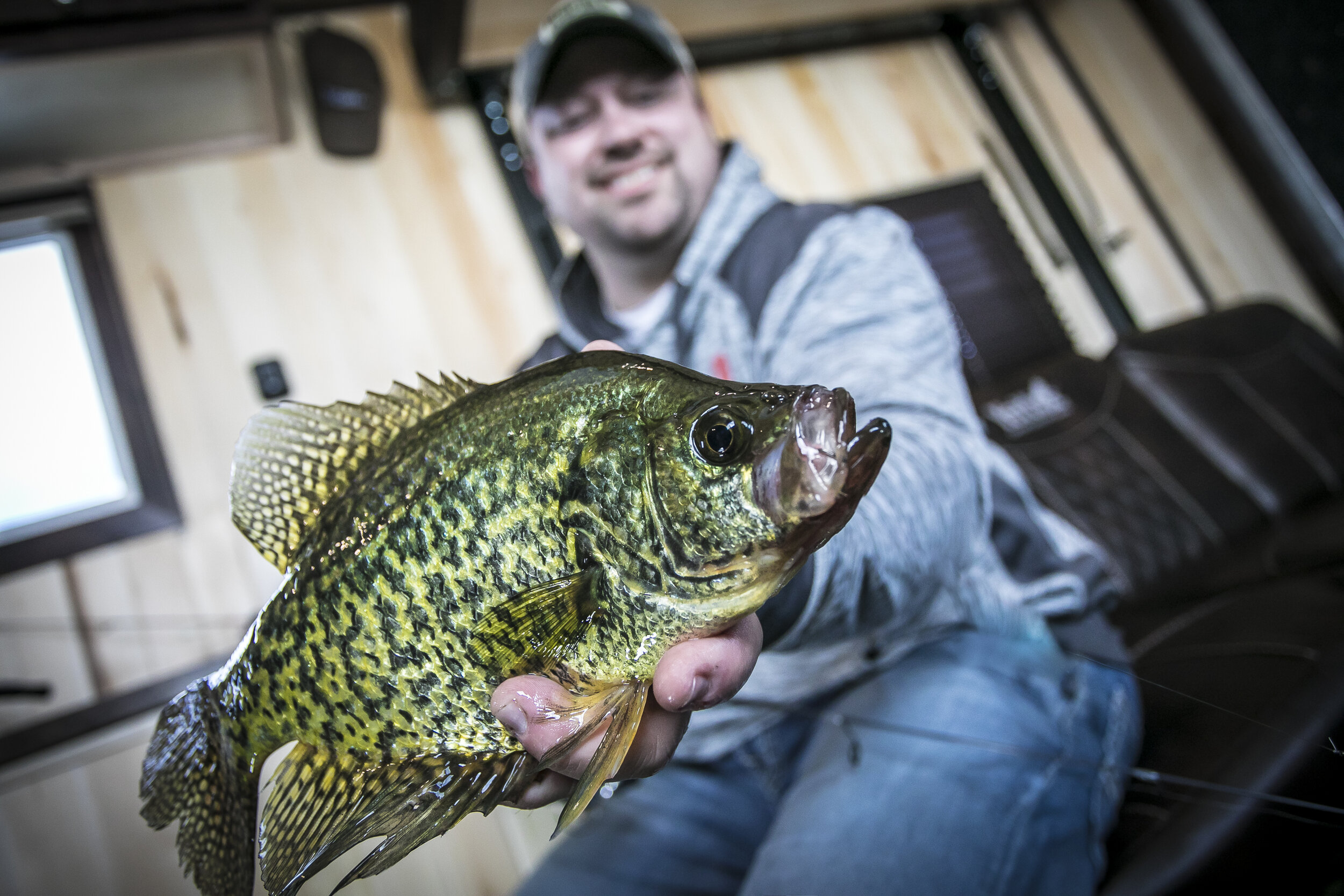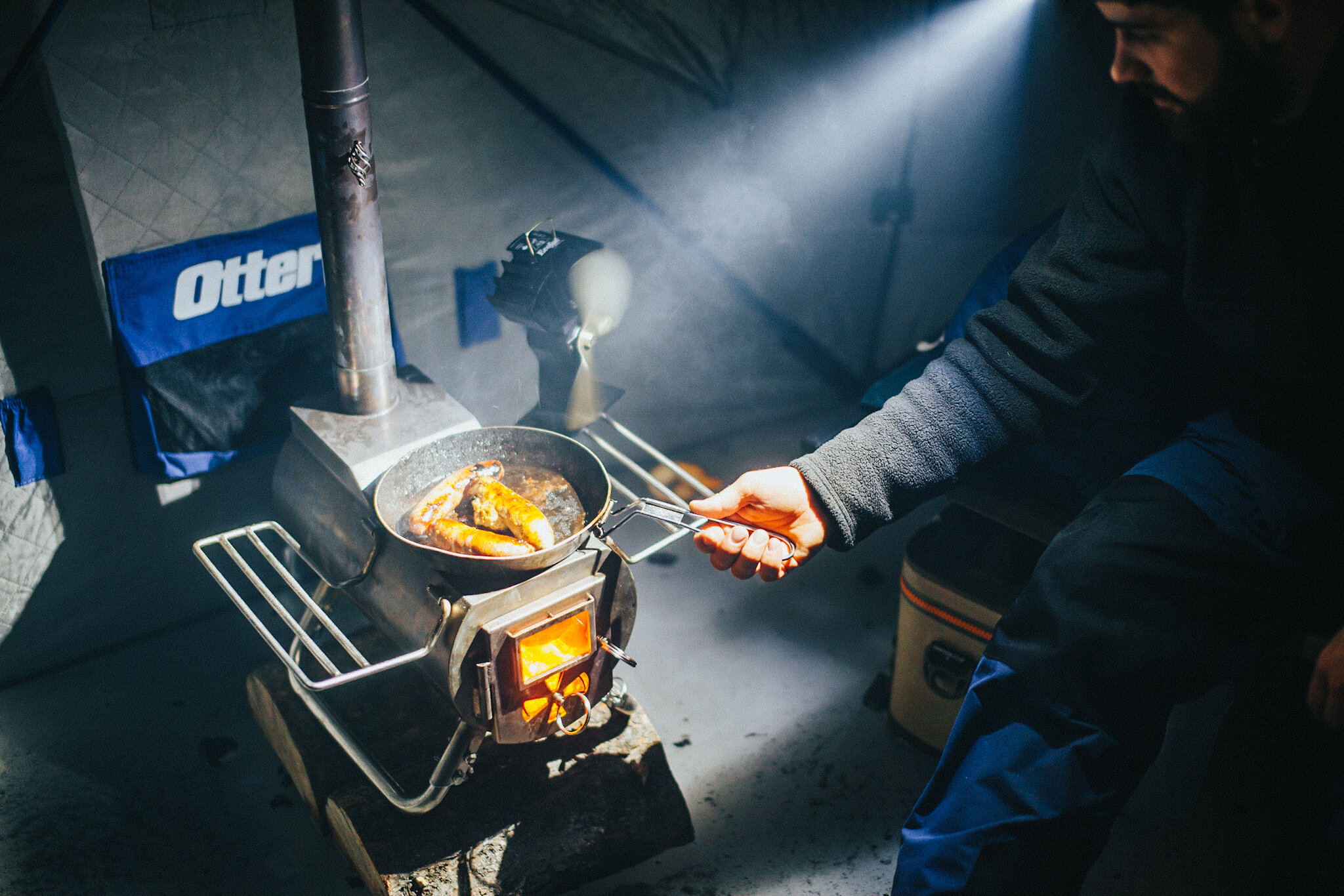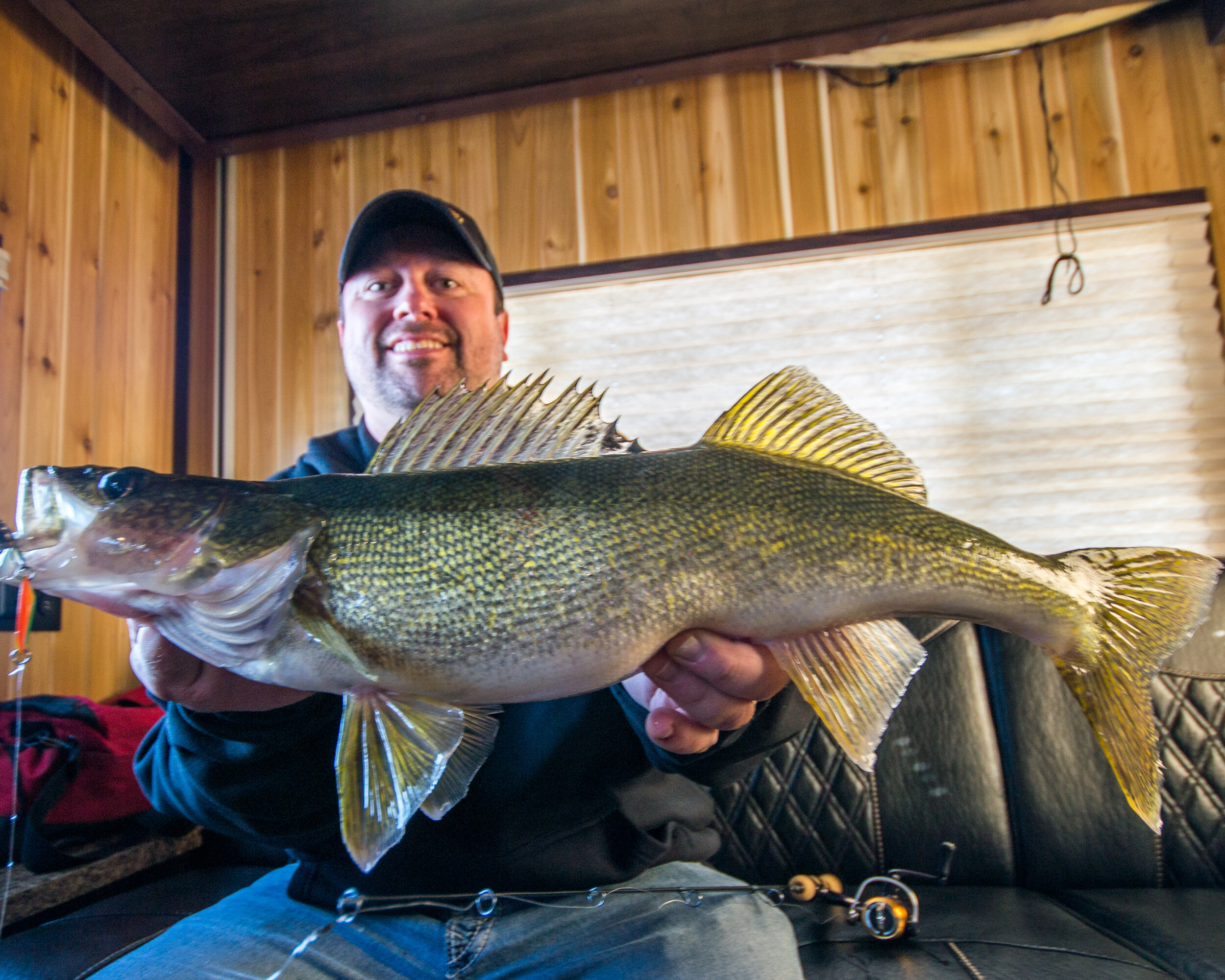Photo credit - Matt Addington
There’s a great many ways to fish out of a wheelhouse, across a diverse fish-scape for a host of species. Yet, no mater what you fish for or where, there are some items that are simply indispensable in a wheelhouse. Many of which, don’t necessarily just relate to the fishing aspect of the experience, but range in category from simple comfort items to food prep and beyond. While the list is certainly longer than just 10 items, here are a few that I’m always thankful to have when heading off for a long weekend trip.
Slush Bucket – Before you ever get to fish, you need to drill holes, and that’s where problems can start. Especially with a speed auger, ice chips and water fly around the house, making for a cold and slippery floor the rest of the trip. Start it off right by drilling through this bucket, and emptying slush outside. It doubles as a holder to temporarily store my catch cover hole covers, and fits conveniently in my shower while fishing.
10” Electric Auger – There’s a lot of great ice augers that’ll put a hole in the ice, but this one does it with power to spare, great torque, and with electric, fumeless energy. The standard blade style is less touchy than curved blade systems, stands up to frequently drilled ice, and has a smooth, top-to-bottom cut no matter where you fish. There are lighter augers on the market, but this one is an ultra durable steel 10” design that’s perfect for drilling a few holes in a wheelhouse.
Pizza Stone – Cooking in RV/fish-house ovens can be a challenging task with a design that overheats at the bottom, and tends to under-perform throughout. Whether you’re cooking pizza or not, you can nullify the scorched bottom effect by simply placing a rectangular pizza stone at the bottom rack of the oven, and cooking on the top rack. This one is heavy duty, deflects heat well, and fits perfectly inside the oven of my Yetti Fish House.
Fish Ruler – A quality ruler is always in style, as no matter the lake you’re fishing or species you’re after, there’s bound to be a target size. Some lakes even have special regulations that require you to measure before keeping. This one is heavy duty, will last, and is tournament approved.
Kitchen Organizer – Drawer and cabinet space is at a premium, so you might as well store commonly used items on the wall within easy reach. This one holds everything from spices to spoons, knives to napkins, and everything in between. Better yet, all the items stay put during transport, making this both a space-saver and a convenient way to store your kitchen goods.
Bait Cooler – Wheelhouse bait buckets can take a beating during transport, going back and forth between the truck bed and fish-house. Not to mention, in cold weather, they’re a pain if they leak, freeze, or are prone to tipping. This one solves most problems associated with bait storage on ice, and is just as good on the open ice as it is in the Yetti.
Rattle Reels – Let’s face it, many of us are casual about our fishing when it’s time to eat, watch a movie, or otherwise just enjoy ice camping. That’s why it’s critical to set a good trap when our eyes are off the rod-tip. The Rattlesnake Rattle Reel design is as much about the wall disk system it’s mounted on as the reel itself. That allows anglers to interchange rod holders, drink holders, and a host of other accessories anywhere a wall disk is mounted. That gives an angler ultimate flexibility while preserving maximum fishability in the process.
Generator – There’s a pile of good ones out there, but this one keeps finding its way into the back of my truck. It’s been exceptionally reliable, has a larger gas reservoir that makes it throughout the night on eco-mode, and starts in the coldest of weather. Did I mention it’s a bargain compared to other units in its power range? This one has lasted well for me, and I think you’ll like it too.
Fish-Finder/Camera Combo – It’s hard to argue that a finder/camera combo is absolutely essential to catch fish, but it’s tougher to ignore the impact of ice electronics for the average wheelhouse experience. If you know you’ll need both items, why not get them in a package, save some cash for bundling, and get it with lithium lightweight power along the way? Better yet, project what you’re seeing on the graph and camera all at once to the big-screen TV.
Plastic Storage Bins - While you’ll need to measure your own cabinets and storage compartments to see what sizes fit, plastic storage cubes like these keep me organized between winter and summer. At the end of the season, I simply swap out the bins that are needed for summer or winter, and keep the odd season on the shelf in the garage for a few months. It results in less wasted space, easier load-out/in, and faster finding of all kinds of items from tackle to basic conveniences. It’s where I store rattle reels, line, rod holders, lures, and a host of other items. An organized wheelhouse catches more fish!
So there you have it, a few items I probably couldn’t live without, or at least, wouldn’t want to. They’re essential to making all parts of my wheelhouse experience what they can be. More importantly, they truly do help me get on more fish, by keeping me efficient and happy on ice. That’s half the battle, especially when mother nature isn’t cooperating as well as she should be.







